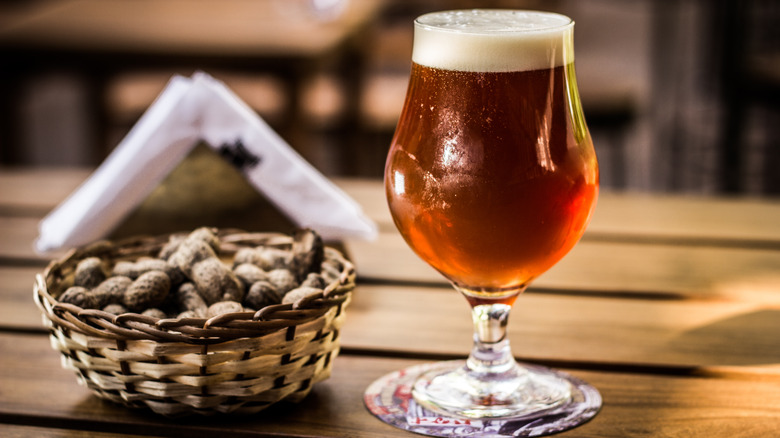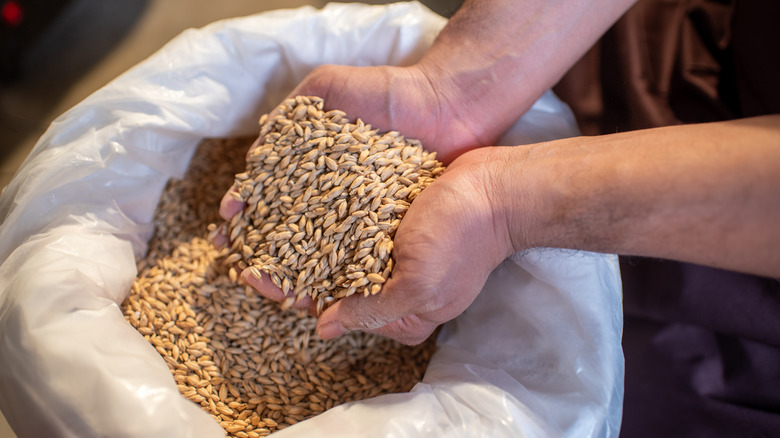One Of The Strongest Ales Around Is Sometimes Mistaken For Wine
We may receive a commission on purchases made from links.
If you've ever ordered a barley wine expecting a dry, slightly fruity beverage akin to red wine, you were probably surprised when that first sip was actually hoppy, bold, and tasted more like honey, molasses, or caramel. Despite its misleading name, barley wine is not actually a wine at all. Instead, it's an ale famous for its high alcohol by volume (ABV) percentage and complex flavors. So if barley wine is a type of beer, why is it parading around with a name to make you think it's wine?
Even though the name seems confusing, the explanation of how it got its title actually makes perfect sense. According to "The Oxford Companion to Beer," the name originated in 18th-century England, and the "wine" portion is a nod to the drink's high alcohol content, which rivals the booziness of wine itself. The ABV of barley wine is often 10%, sometimes more, while a glass of wine is usually around 12%. To put it into perspective, most beers have an ABV of about 4% to 5%. However, businesses slapped "barley" on the front of it to make it clear that the drink is brewed with grains, not grapes. Basically, it's a way to say "watch out, this beer will get you as drunk as wine does."
The fermentation process is what makes barley wine an ale
All beers are either ales or lagers, and the designations are based on the type of yeast used and the temperature during the fermentation process. Barley wine is made with traditional ale-brewing methods, which means a top-fermenting yeast is used, and it requires temperatures between 60 and 70 degrees Fahrenheit in order to ferment. Brewers will include more malts than they would when making other types of ale — particularly malted barley, which is a key ingredient in most beers. More of this grain means more sugars to ferment, which leads to that signature high alcohol content. A healthy dose of hops, which is the ingredient that makes beer bitter, is added to balance out the drink's sweetness from all the extra malted barley.
Today, there are two main styles of barley wine: English and American. While both are still some of the strongest ales available, they have some key flavor differences. American-style barley wine tends to be hoppier, while the English drink embraces the sweetness and only has hints of hops. Like wine, barley wine ages well thanks to that high alcohol content, and both styles are sometimes matured in barrels previously used to distill whiskey. This gives the finished product undertones of oak, vanilla, and spices that the container absorbed from its previous tenant. Even with distinct differences between the two styles, barley wine has a complex flavor profile that is perfect for folks who enjoy sipping and savoring a brew with interesting tastes. Just remember that this isn't your average beer when it comes to alcohol content.

